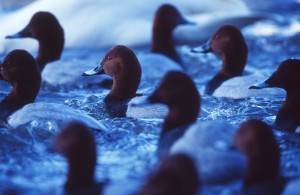Common pochard upgraded to "Vulnerable"

Concern that the common pochard – one of the UK’s most popular duck species – is declining rapidly has led to its status being stepped up to “Vulnerable” in the IUCN Red List of threatened species, published today.
It’s one of several wetland species whose numbers have declined, leading to a step up in the level of concern for each. Amongst wading birds, the knot, bar-tailed godwit, curlew sandpiper, oystercatcher and lapwing have all been upgraded to “Near Threatened”. WWT’s nine wetland centres provide important habitat for many of these species of wetland birds.
WWT is already working to find out the reasons for the common pochard’s decline, so that more informed action could be taken to help its plight.
WWT’s Head of Monitoring Rich Hearn says:
“A key thing we need to find out is whether more birds are dying, or whether fewer young are being produced in the first place.
“The survival of females could be an important part of ongoing changes to the population so volunteers are standing by across the UK, Europe and North Africa to count the ratio of males versus females at wintering locations.
"The data these volunteers produce could provide an important piece of the jigsaw of why such a common duck in the UK is declining so rapidly.”
You can find out more about the common pochard sex ratio assessment on the Wetlands International / IUCN-SSC Duck Specialist Group website. The DSG is a global network of duck experts working on the monitoring, research, conservation and management of wild duck populations which is chaired by WWT.

